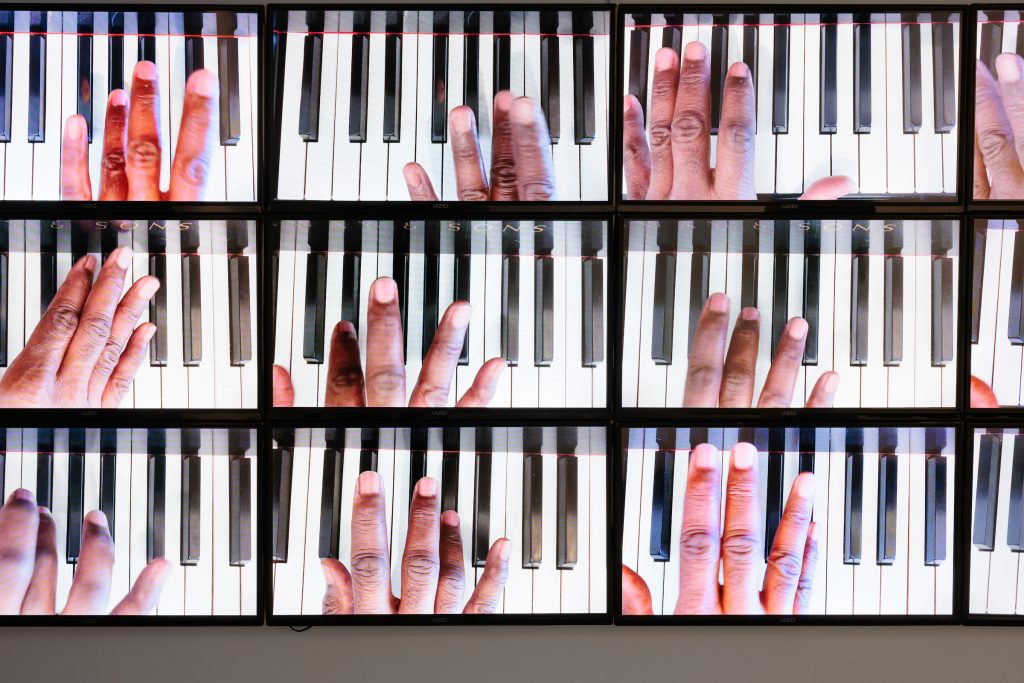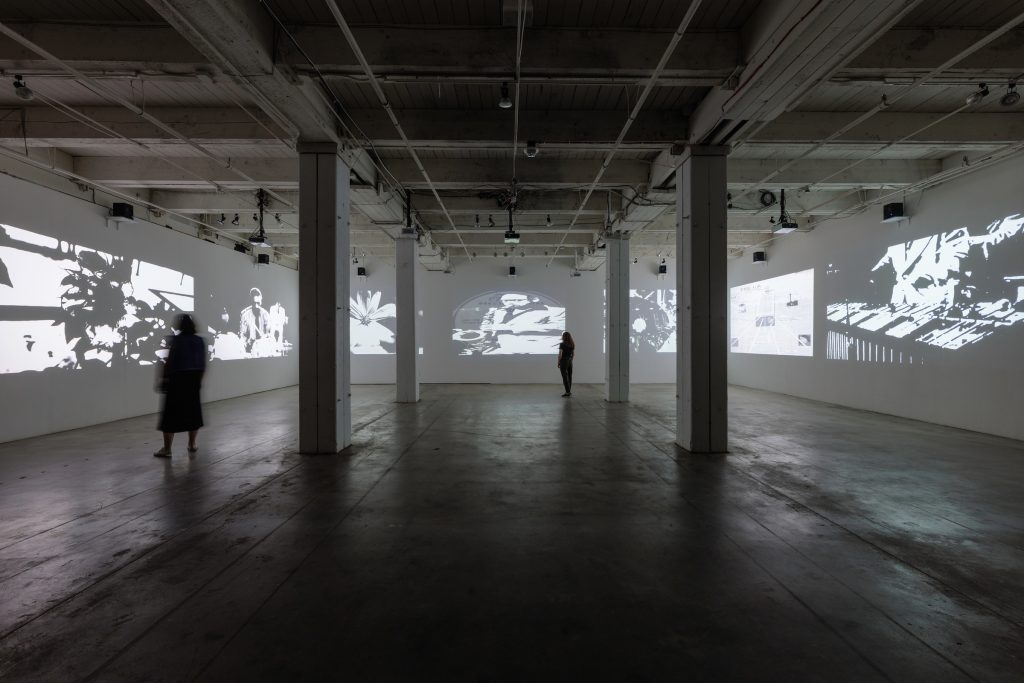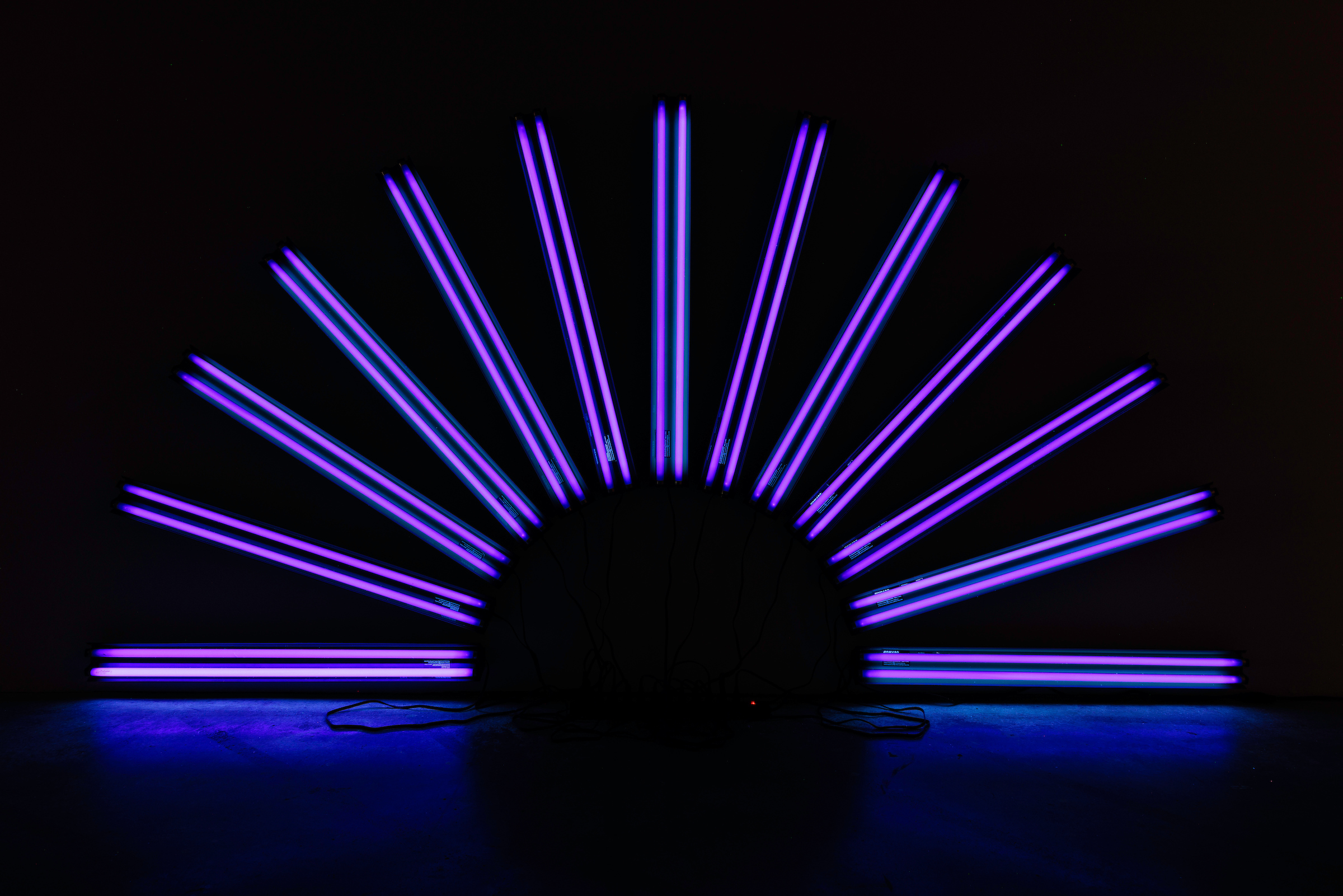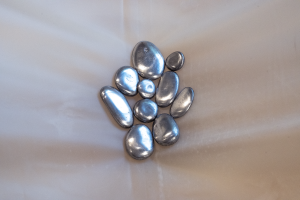
This essay was produced and co-published in collaboration with Amplify Arts. Amplify incubates liberatory ideas through funding, space, advocacy, and opportunities for collective learning, collaboration, and community building. Through interdisciplinary programming and shared decision-making, they support the needs of Omaha-area artists, organizers, and cultural workers.
Audio description:
The audio consists of a voiceover of artist Paul Stephen Benjamin’s interview responses (transcribed below), plus an introspective experimental composition that intermingles with the words of the interview. The composition consists of layered background sounds that consists of: keyboard played by Mary Elizabeth Jo Dixen Pelenaise Kapi’olani Lawson, her vocals (chanting, reading, humming), sounds inside a kitchen, and the voice of Paul Stephen Benjamin singing “Black Is the Color”.

Interview transcript:
Five questions for Paul Stephen Benjamin with Mary ejdpkl Lawson about his exhibition “Black of Night” shown at Bemis Center for Contemporary Arts from May 18, 2024 to September 18, 2024 discussing how Benjamin hears, listens to, and carries forward the sounds of Blackness in his life and practice.
* * *
Mary Lawson: What were the sounds of Blackness for you while living in Chicago?
Paul Stephen Benjamin: When I think about Chicago and the sounds of Blackness I think about different music being played on the stereo, but the sound I remember most is the train. I grew up across the street from the train. You could see the train out of our front window. All times of the day and night you could hear and feel the train—I also think about my grandmother, mom and aunts. One of the sounds was everyone doing hair in my grandma’s basement salon. The sound of preparing food, and the conversations in the kitchen.
I think about hearing jazz, laughter, and cussing from my uncles in that same basement who were playing chess behind closed doors—they said I was too young to be in the room. I lived around the corner from Tully Park and would spend a lot of time there. You could hear all kinds of things: sports, laughter, crying, fighting, etc. I recall the sound of working for my family’s small construction business working in brick and concrete. Real manual labor that consisted of each movement made a sound, whether you were stacking bricks, mixing mortar, shoveling and putting the mortar and bricks on the mortar boards, walking through rocks, sand, and water. On the way to grammar school I remember my brothers and I having to listen to the blues, mostly Bobby Blue Bland in that same pickup truck that we went to work in, on an 8-track cassette player. There are so many more things I could share.
ML: Where did you encounter these sounds, and do they resonate with you today?
PSB: Yes, they still resonate with me. Those sounds are as much a part of me because it was/is the foundation of how I hear things. I believe I am reliving some of these sounds with my own kids.
ML: As you migrated south to Atlanta, how did the sounds of Blackness change, if at all, and what might be the intersections of these sounds of Blackness for you—between these two cities?
PSB: I believe these sounds traveled with me. Me being in Atlanta is like a reverse migration. Most of
my family participated in the great migration from southern states to Chicago. I would say those sounds that I was exposed to originated from Southern roots.
ML: I’m curious about what you consume knowing a little bit about how you choose certain materials and objects—depending on the medium—you are working with? What do you like to eat, read, and listen to on a regular day? How does this change when you are traveling and moving around in a new unfamiliar place?
PSB: I have a consistent diet, mostly what you would call pescatarian. Although my 13 year old son is the meat eater in the family now, so I’ve gotten back to cooking meals I grew up eating. One of the most consistent things I do on a daily basis is type. Each day for the past five years I have manually typed a full page of what I call daily meditations on the color black. It is a repetition of the phrase “Black is Beautiful”. The meditation is a pattern of sounds and words that are a stream of consciousness. Often the works are filled with news, music lyrics, the names of artists, curators, popular Black figures in sports and entertainment. For instance, right now, next to my typewriter are several books: This is America: The Unsettling Criticism in American Identity, Genevieve Gaignard (Gag-nard) The Norton Anthology of Theory and Criticism, morning haiku, Sonia Sanchez,
ML: Who are the jazz musicians that have influenced how you listen, and what your ear gravitates
towards?
PSB: Recently, I have been fixated with Alice Coltrane. My performance at Bemis was titled A Love letter
to Alice. Alice was also the name of my paternal Grandmother. Nina Simone is one of my favorites. My most memorable intro to Jazz was through my uncle Michael. He was one of those uncles who would not let me in that basement. He made me a cassette tape from the LPs he had collected. It included Miles, Coltrane, Art Blakey, Sonny Rollins, Dexter Gordon, Ahmad Jamal, and many others. In high school and college my love for music expanded.


About the author: Mary Elizabeth Jo Dixen Pelenaise Kapi’olani Lawson is a woman of care. She is of the sun and the black earth. She comes from a Woman of Faith, so she too is a Woman of Faith. Mary is a writer, organizer, and performing artist who is currently based in the Midwest.



